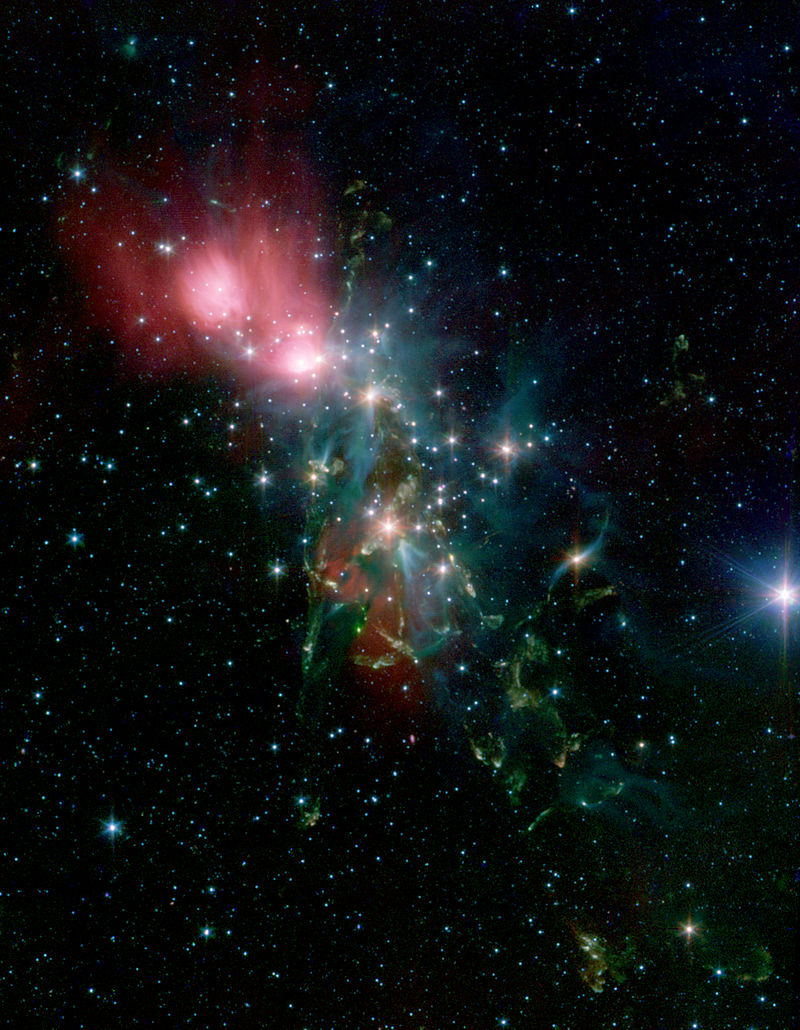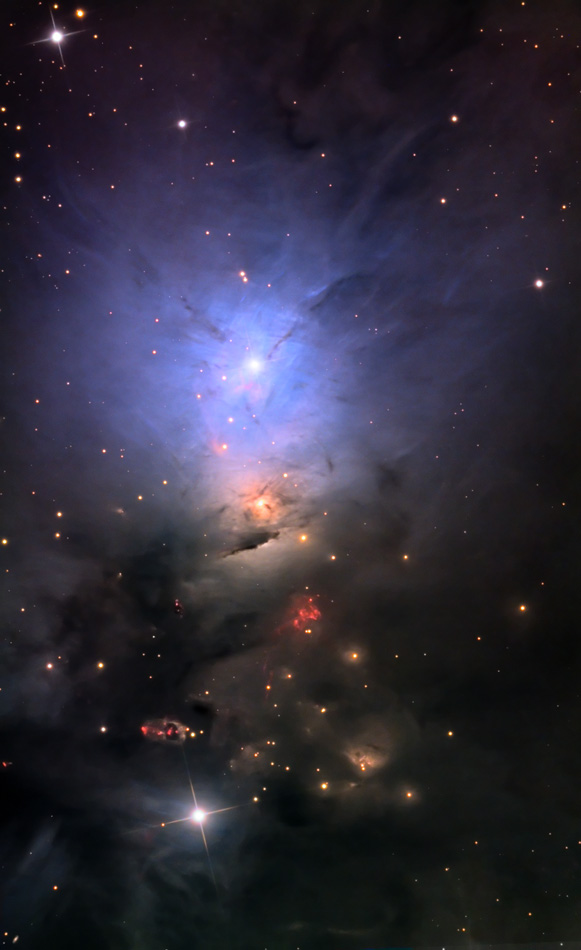Today's APOD is so beautiful! And it displays two regions of star formation with reflection and emission nebulas, but one appears to be large and the other one small:
Stardust in Perseus
Image Credit & Copyright: Jack Groves
The bright blue star right next to star cluster IC 348, with its faint red emission nebula, is of spectral class B1III. This means that the star, Omicron Persei, is a blue giant (but not a supergiant) star, and it is just hot enough to ionize a faint red emission nebula. If you ask me, that is why the nebula surrounding cluster IC 348 is both red and faint. In my opinion, then, it is likely that the nebula surrounding IC 348 is being ionized by Omicron Persei. That also means, of course, that I think that Omi Per and IC 348 are physically related.
This is what cluster IC 348 looks like in infrared light (or rather, in two micron light):
IC 348, photographed by 2MASS.
IC 348 looks at least reasonably respectable, doesn't it?
Wikipedia wrote:
IC 348 is a star-forming region in the constellation Perseus located about 315 parsecs from the Sun. It consists of nebulosity and an associated 2-million-year-old cluster of roughly 400 stars within an angular diameter of 20″. The most massive stars in the cluster are the binary star system BD+31°643, which has a combined spectral class of B5. Based upon infrared observations using the Spitzer Space Telescope, about half of the stars in the cluster have a circumstellar disk, of which 60% are thick or primordial disks.
NGC 1333 is quite interesting, too.
Wikipedia wrote about NGC 1333:
The nebula region has a combined mass of approximately 450 M
☉, while the cluster contains around 150 stars with a median age of a million years and a combined mass of 100 M
☉. The average star formation rate is 10×10
−4 M
☉ yr
–1. Within the nebular are 20 young stellar objects producing outflows, including Herbig–Haro objects. A total of 95 X-ray sources that are associated with known members of embedded star clusters. In 2011 researchers reported finding 30 to 40 brown dwarf objects in the cloud and in the Rho Ophiuchi cloud complex.
So IC 348 is older than NGC 1333, and the stars have mostly emerged from their stellar cocoons (yes, but there is still nebulosity surrounding the stars). The stars of NGC 1333 are younger than those in IC 348 and appear more tumultuous.
IC 348 looks bigger than NGC 1333 to me.
Ann
 Stardust in Perseus
Stardust in Perseus



